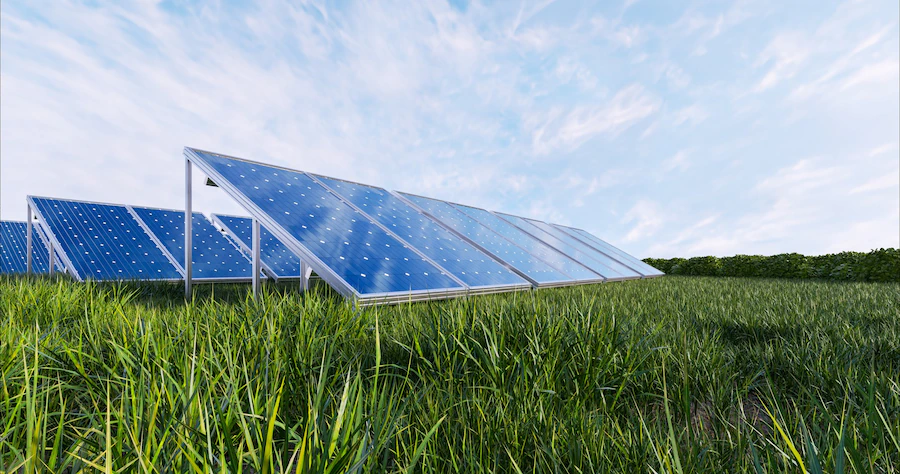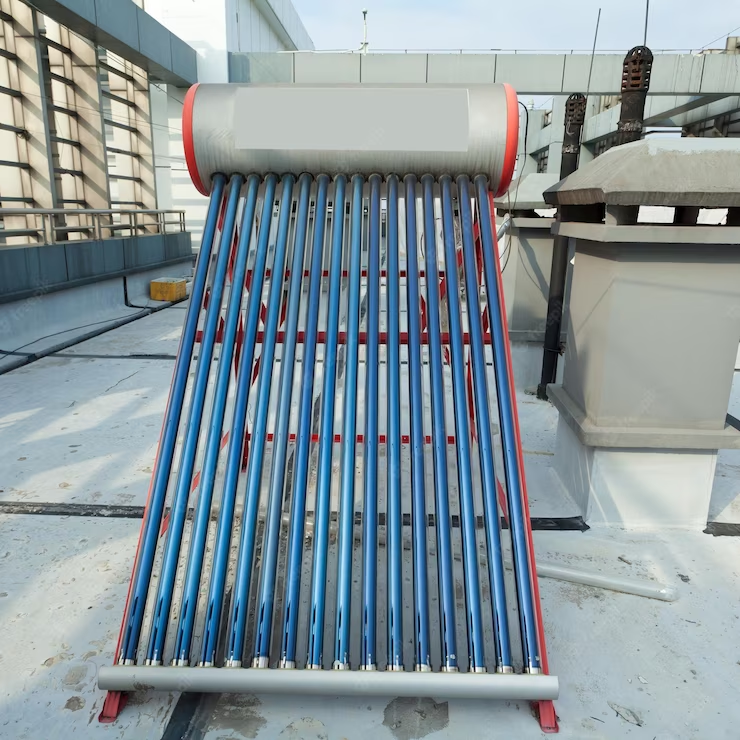solar energy


Solar energy is the light and heat emitted by the sun that has been exploited by man since ancient times using a range of technologies that are constantly evolving. Techniques for using solar energy include the use of thermal energy from the sun, whether for direct heating or as part of a mechanical conversion process for movement or electrical energy, or to generate electricity through photovoltaic phenomena using photovoltaic panels. Most of the renewable energy sources available on the Earth's surface are attributed to solar radiation in addition to secondary energy sources, such as wind energy, wave energy, hydropower, and biomass. It is worth noting that only a small part of the available solar energy has been used in our lives Planet Earth receives 174 petawatts of incoming solar radiation (solar radiation) in the upper atmosphere. About 30% of this radiation is reflected into space while the rest is absorbed by clouds, oceans and land masses. The energy generated by the sun is 3.7 ⨉ 1023 kW, but only 1.7 ⨉ 1014 kW reaches the earth. The solar constant (Isc): is the total solar irradiative energy that strikes a unit area exposed to perpendicular rays of the sun at the mean sun-earth distance. Solar constant = Isc = 1353 +-20 W/m2 The extraterrestrial radiation (Io) striking the earth varies throughout the year because of the change in the sun-earth distance.
Photovoltaic is the field of technology and research related to the application of solar cells for energy production by converting sun energy directly into electricity by the photovoltaic effect. The latter refers to the process of converting light to electricity Solar cells are photovoltaic devices that use semi-conducting materials to convert sunlight directly into electricity. When sunlight is absorbed by these materials, it causes electrons to flow through the material generating electric currents. Solar cells produce direct current DC electricity.
Performance of PV modules depends on the amount of solar irradiation received which varies by location and season. For this reason, systems normally need to be carefully designed. A typical commercial solar cell has an efficiency of 15%. The first solar cells, built in the 1950s, had efficiencies of less than 4%. PV technology can be employed in a variety of applications Typical applications of PV technology include remote telecommunications, PV home systems, vaccine refrigeration, water pumping, grid connected or building integrated systems, miniature electronic devices and toys
Provide electricity to households and villages that are not connected to the utility electricity network (also referred to as the grid) Provide electricity for lighting, phone charging, refrigeration and other low power loads Are often the most appropriate technology to meet the energy demands of off-grid communities
Are used in locations where small amounts of electricity have a high value Were the first commercial application for terrestrial PV systems Provide power for a wide range of applications, such as telecommunication, water pumping, vaccine refrigeration and navigational aids
Provide power to grid-connected customers or directly to the electricity network May be on or integrated into the customer's premises, often on the demand side of the electricity meter, on public and commercial buildings, or elsewhere in the built environment
Perform the functions of centralized power stations Supply power that is not associated with a particular electricity customer With an off-grid solar system, you’re completely reliant on the sun and energy stored in batteries to power your home or business. If you decide to install an on-grid solar system, you will always have access to electricity (unless the grid goes down), whether your solar system is producing or if you have batteries

To design a system for PV application the following information is required: daily energy requirement, voltage and current draw of appliances, average insolation (kWh/m2 day), the yearly variation in insolation levels for the specific area and the equipment type, availability, and costs to enable appropriate selection The cost of photovoltaic panels has fallen by a tenth in a single decade. This competition opens the door to a global transformation of sustainable energy, which will help reduce global warming
1. a low-cost maintenance and
2. a relatively long-life cycle,
3. do not have mobile parts and its components are made of solid state electronic which make it possible to use these systems in remote places
1. the amount of hours of sunshine exposure by the solar panel
2. The type and quantity of modules that are installed
3. It’s orientation
4. Inclination
5. Nominal power
Solar thermal energy is technologies that use heat energy from the sun directly to heat a carrier or heat carrier, which is most often water. The resulting hot water can be used for domestic and industrial purposes and has virtually no carbon emissions because no fuel is burned to heat the water. There are also advanced solar heat energy systems capable of trapping and collecting the sun's energy to produce steam that is used to drive turbines to produce electricity. Solar heater systems (heat collecting plates or heat collecting tubes)

A solar heater is the conversion of sunlight into heat for heating water using a solar heat collector. There are many innovations at multiple costs to provide solutions in all types of climates. Solar water heating is widely used in some residential homes and in some industrial applications.
1. solar collector
2. storage device that supply thermal energy to a load
3. pump
4. load
1. Capture or absorb as much as possible of the available solar energy
2. Retain as much of this received energy as possible
3. Transfer as much of this retained energy as possible into the coolant
Concentrating solar energy systems (collecting mirrors, power towers and solar furnaces). Systems that rely on the use of lenses and mirrors to focus the scattered sunlight carrying thermal energy, then this energy is converted into electrical energy indirectly.